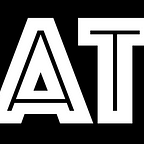HISTORY CALLING
John F. Kennedy, Great Man Of History
Thanks partly to historical circumstances, JFK saves the world
There were several flashpoints and potential stumbles into thermonuclear apocalypse during the Cold War, some more dangerous than others.
In 1966, during what became known as the Palomares B-52 crash, a US B-52G bomber collided with a KC-135 tanker during mid-air refuelling over the Mediterranean Sea, just off the coast of Spain. The KC-135 was destroyed when its fuel load ignited and the B-52G broke up.
Of the four hydrogen bombs the B-52G was carrying, three were found on land near the fishing village of Palomares in Almería, Spain. The non-nuclear explosives in two of the weapons detonated upon impact with the ground, resulting in the contamination of nearly a square-mile area by plutonium. The fourth, which fell into the Mediterranean Sea, was recovered intact after a two-and-a-half-month search.
Much later, in August 1983, the Soviets shot down an off-course Korean Air Lines Boeing…
